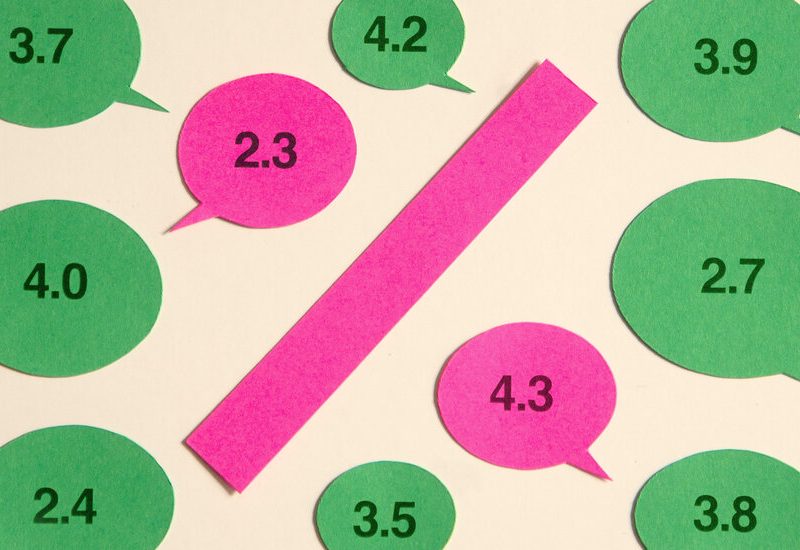A crucial question is hanging over the American economy and the fall presidential election: Why are consumer prices still growing uncomfortably fast, even after a sustained campaign by the Federal Reserve to slow the economy by raising interest rates?
Economists and policy experts have offered several explanations. Some are essentially quirks of the current economic moment, like a delayed, post-pandemic surge in the cost of home and auto insurance. Others are long-running structural issues, like a lack of affordable housing that has pushed up rents in big cities like New York as would-be tenants compete for units.
But some economists, including top officials at the International Monetary Fund, said that the federal government bore some of the blame because it had continued to pump large amounts of borrowed money into the economy at a time when the economy did not need a fiscal boost.
That borrowing is a result of a federal budget deficit that has been elevated by tax cuts and spending increases. It is helping to fuel demand for goods and services by channeling money to companies and people who then go out and spend it.
I.M.F. officials warned that the deficit was also increasing prices. In a report earlier this month, they wrote that while America’s recent economic performance was impressive, it was fueled in part by a pace of borrowing “that is out of line with long-term fiscal sustainability.”
The I.M.F. said that U.S. fiscal policies were adding about a half a percentage point to the national inflation rate and raising “short-term risks to the disinflation process” — essentially saying that the government was working at cross-purposes with the Fed.
Biden administration economists, and some analysts on Wall Street, reject that view. Administration officials said that the analysis underlying the I.M.F.’s claims was implausible. That’s in part because the report found that federal policy was adding just as much to inflation currently as it did two years ago, at a time when direct payments to consumers and other programs from President Biden’s 2021 stimulus bill were increasing spending across the economy.
Administration officials pointed to other measures of fiscal policy, including a continuing analysis by the Brookings Institution in Washington, that suggested that government tax and spending policies were not significantly adding to economic growth or inflation now or in the recent past.
“I don’t think the recent inflation record supports an excessive demand story,” Jared Bernstein, the chairman of the White House Council of Economic Advisers, said in an interview. “I think what we’ve seen is that as supply chains have unsnarled, demand in the job market has cooled somewhat. We’ve been able to maintain historically low unemployment while getting significant disinflation.”
Mr. Bernstein added that, while administration officials were careful not to comment on the central bank’s interest rate decisions, “our fiscal stance is not fighting the Fed.”
The debate is important for how the Fed, which bears primary responsibility for controlling price growth, sets policy in the months ahead.
Investors entered the year expecting Fed officials to cut interest rates several times, after price growth slowed rapidly in 2023 and began to approach the central bank’s target level of 2 percent per year. They have revised those forecasts as new data show that progress stalling out and, by many measures, beginning to reverse.
How policymakers view the interplay between deficits and inflation could also shape decisions by the next president and Congress. If re-elected, Mr. Biden said that he would seek to reduce deficits by about $3 trillion over a decade, primarily by raising taxes on high earners and corporations. His Republican opponent, former President Donald J. Trump, has repeated his past — and unfulfilled — promises to eliminate the national debt, while also pushing for an extension of his 2017 tax cuts that could add trillions to deficits.
Both presidents’ policies, along with decisions by presidents before them, have contributed to the nation’s current fiscal imbalance. The deficit spiked when Mr. Trump, and then Mr. Biden, signed relief bills for people and businesses amid the coronavirus pandemic. It fell in the 2022 fiscal year but effectively doubled last year.
The deficit is now larger, as a share of the economy, than is historically normal for this point in an economic recovery — when unemployment is low and economic growth remains strong.
That is even true if you exclude the costs of servicing the government’s mounting debt load, which jumped last year as the Fed raised interest rates, a measure economists call the “primary deficit.” When properly measured, the primary deficit last year was equal to about 5 percent of the economy’s annual output. Data from the nonpartisan Congressional Budget Office suggest that it was the sixth-highest primary deficit of any year since 1962; the other five all came during, or immediately after, the pandemic or the 2008 financial crisis.
High deficits could affect inflation in a few ways. They could increase demand for goods or services that remain in relatively short supply, driving up prices. They could affect consumers’ views about how much inflation they expect in the future and chip away at the effectiveness of Fed rate increases to slow growth, said Joseph H. Davis, the chief global economist at the investment firm Vanguard.
Mr. Davis said that the shift from a declining deficit to a rising one was most likely adding modestly to price growth and making the Fed’s job more difficult: “What used to be a tailwind on inflation has become more of a headwind,” he said.
The deficit increase last year reflected several factors, including volatile capital gains tax collections and the effects of natural disasters on tax filing. It also reflected increased government spending and tax breaks signed into law by Mr. Biden. A bipartisan 2021 infrastructure bill is now funding roads, broadband and other projects nationwide. The government is paying for additional health benefits for veterans exposed to toxic burn pits.
Tax incentives in a bipartisan law meant to encourage semiconductor production and a party-line law intended to accelerate the transition from fossil fuels to lower-emission energy sources have spurred hundreds of billions of dollars in announcements or spending on new factory construction.
“It was a large dose of fiscal stimulus over the last year,” said Jason Furman, a Harvard economist who chaired the White House Council of Economic Advisers under President Barack Obama. “To get people lower mortgage rates,” he added, “to give businesses the ability to expand and invest and grow, we need to be bringing the deficit down.”
Data from other economists, like the creators of the Hutchins Center Fiscal Impact Measure at Brookings, suggest that the increase in spending and tax breaks last year did not outweigh the drag on the economy from expiring Covid relief. In other words, they effectively show that the end of stimulus aid that propped up consumer demand in the early stages of the pandemic offset any increased demand from new spending and tax breaks.
Economists at the investment bank UBS wrote last week that after adding to growth last year, including by fueling factory construction, federal tax and spending policy was likely to “flip” to dragging on growth this year. Economists at Bank of America Securities made a similar case last week after the Commerce Department reported that economic growth slowed in the first months of this year.
Administration officials said there were simpler — and superior — explanations for why price growth remained above the Fed’s target than the deficit. Housing inflation has not moderated as quickly as many economists expected, though White House models predict it will soon. Price growth in auto insurance, financial services and medical services are effectively one-offs that are keeping inflation elevated now, the officials said, but will not continue to push prices higher in the months to come.
“It’s not really a fiscal story,” Mr. Bernstein said.



